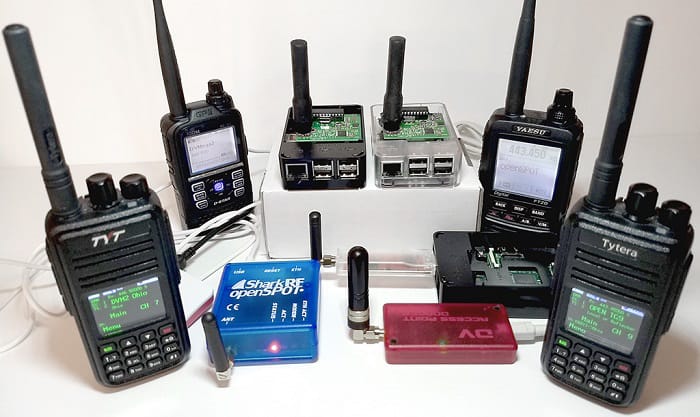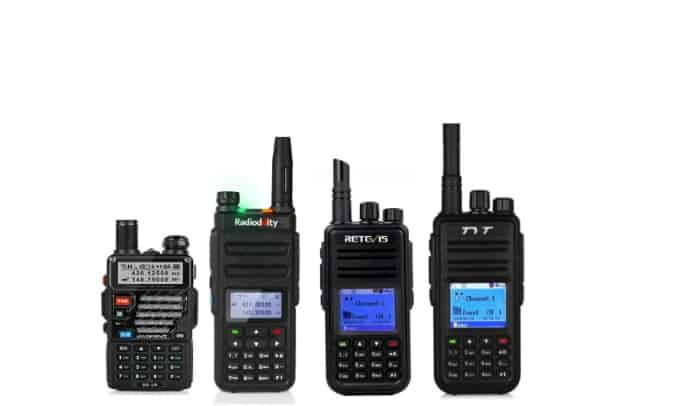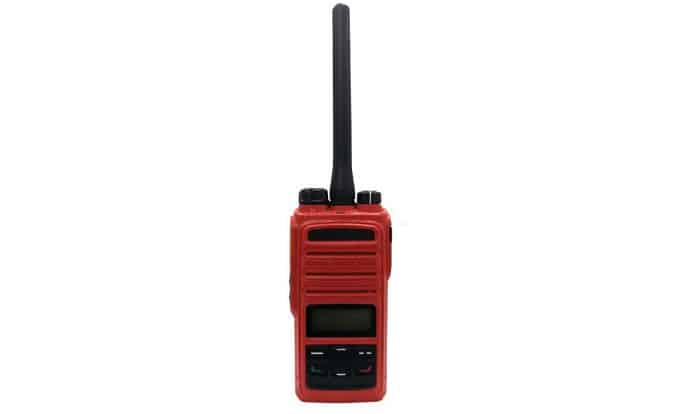If you’re wondering, what is DMR ham radio? Then the answer is very simple. It’s a combination of ham radio and the Digital Mobile Radio (DMR) international standard.
Ham radio are amateur radio operators who broadcast as a hobby. Being amateur radio operators, they can use any standard available to them. And in this case, they are using the DMR standard for their radio broadcasts.
Table of Contents
What to Know About DMR Ham Radio
The DMR meaning is “digital mobile radio”. It is used as an international standard for two-way radio communications. Because of the DMR standard, equipment from many manufacturers can be on the same network and perform all of the standard’s functions, thus offering users many affordable options.
The DMR standard was developed to establish a straightforward and low-cost digital radio system that enables equipment from several manufacturers to communicate with one another.
What is DMR Radio?
Ham radio is another term for amateur radio, a practice of broadcasting on unlicensed radio frequencies only available to these amateur radio operators, also known as hams.
Despite their designation as “amateur radio operators,” those who broadcast on these frequencies are not unskilled. Ham radio operators must study and pass tests to obtain a license to broadcast.
So in a way, DMR Ham radio operators are people who use the DMR standard for their broadcasts. Using this standard is understandable since DMR is more affordable for ham radio operators doing broadcasts as hobbies.
DMR Ham Radio Frequencies
DMR ham radio frequencies can be classified into two types VHF and UHF:
- VHF – 30 MHz to 300 MHz frequency range
- UHF – of 300 MHz to 1 GHz frequency range
The DMR radio range has frequencies ranging from 30 MHz to 1000 MHz, or 1 GHz. Furthermore, most DMR equipment runs in the 136 – 174 MHz and 403 – 527 MHz frequency bands.
This, however, is not universal since each country has its own licensing agency and rules.
Some DMR frequencies are issued without requiring a license, while others do, so it’s best to check the individual rules yourself. Lastly, It is recommended that you tune your broadcasts within these ranges since other hams will also be within these DMR radio frequencies.
DMR Tiers and Frequencies
DMR radios have three different tiers, and they can be differentiated based on the frequencies they operate.
- DMR tier 1
DMR Tier I specifies 16 DMR channels between 446 and 446.2 MHz.This tier refers to a set of DMR frequencies that the European Telecommunications Standards Institute (ETSI) has designated for use without a license in the European Union.
- DMR tier 2
DMR Tier II equipment must be licensed by the frequency licensing authority in your country. It can operate across the whole DMR frequency range but is most frequently seen in the 136 – 174 MHz VHF and 403 – 527 MHz UHF bands.
- DMR tier 3
DMR tier III equipment runs in “trunked mode,” which implies that rather than having a set frequency, radios are assigned to frequencies automatically.
This tier utilizes the same frequency range as Tier II equipment but adds other capabilities to enhance the system’s functionality to meet your specific demands.
How Does DMR Radio Work?
You should be aware that they communicate via the Motorola TRBO protocol.
The TRBO protocol, like other digital modes such as D-Star and APCO P25, converts your voice into a digital format and sends it as radio frequencies.
DMR also makes use of DMR reappears, which are essentially just radio repeaters. It receives a radio signal and then retransmits it at a higher power level to enable it to travel greater distances.
This permits radio users to converse in the presence of impediments or distance. Additionally, this enables hams to cover a much bigger area while using fewer resources.
DMR allows you to communicate with other DMR radios and listen to DMR repeaters networked together worldwide via the internet.
What Makes DMR Radios So Special?
DMR is distinct from other digital modes in that it divides a single frequency into two independent “channels” or time slots via TDMA (Time-Division Multiple Access).
Through TDMA, people can have two conversations simultaneously while using the same frequency.
Each frequency has a slot 1 or 2 that multiple users can share. Each user sends quickly in their own time slot allowing multiple stations to share the same frequency channel while only using a portion of its capacity.
DMR makes things convenient, allowing hams to communicate effectively when talking to different groups of people. This also makes the process more cost-effective and saves hams both time and energy.
DMR Radio Manufacturers
Most DMR radio manufacturers on the market create reliable radios and durable radios for commercial use, including Radioddity, Baofeng, TYT, Ailunce, etc.
When it comes to DMR radios to avoid, you should include radios bought from unknown brands and from sellers that don’t give you specific details about the product in the first place.
Conclusion
The DMR standard can be quite complicated for many people not familiar with radio technology. If you’re aspiring to be a ham radio operator, understanding this standard and its frequencies is a good first step toward becoming an amateur radio operator.
Now you know the answer to the question, “what is DMR ham radio?” Hopefully, this article was helpful for you, and you have a better understanding of the DMR standard and why DMR hams like to use them.

Hi, I am Amaro Frank – the Wind Up Radio’s content editor and writer. Working with Adam is so much fun, as his stories and experiences enrich my knowledge about radio communications and radio accessories. My main tasks in Wind Up Radio are building content and generating great articles on different topics around radio accessories.




